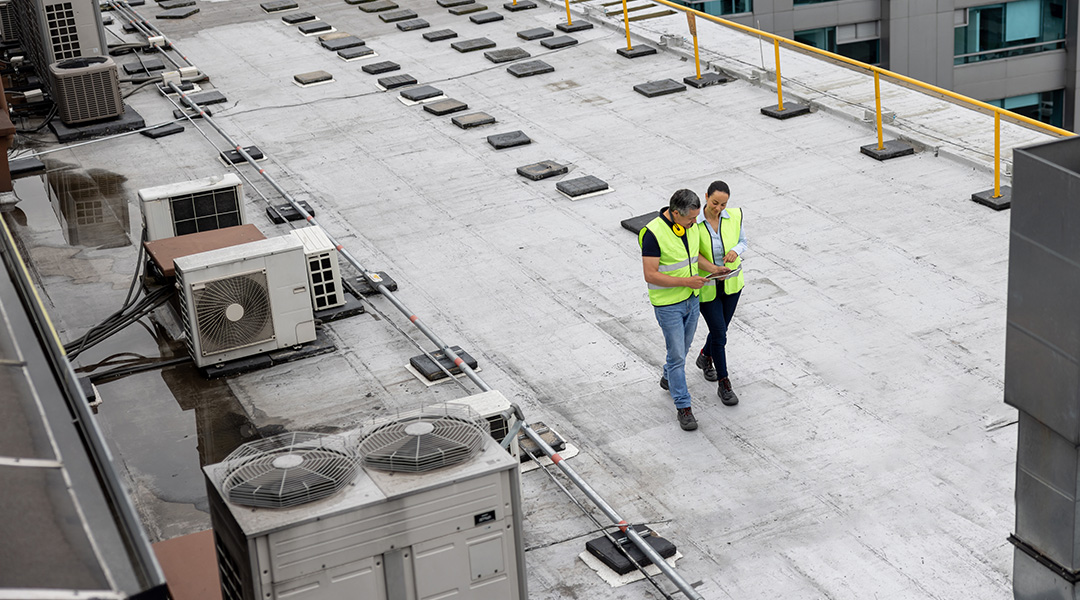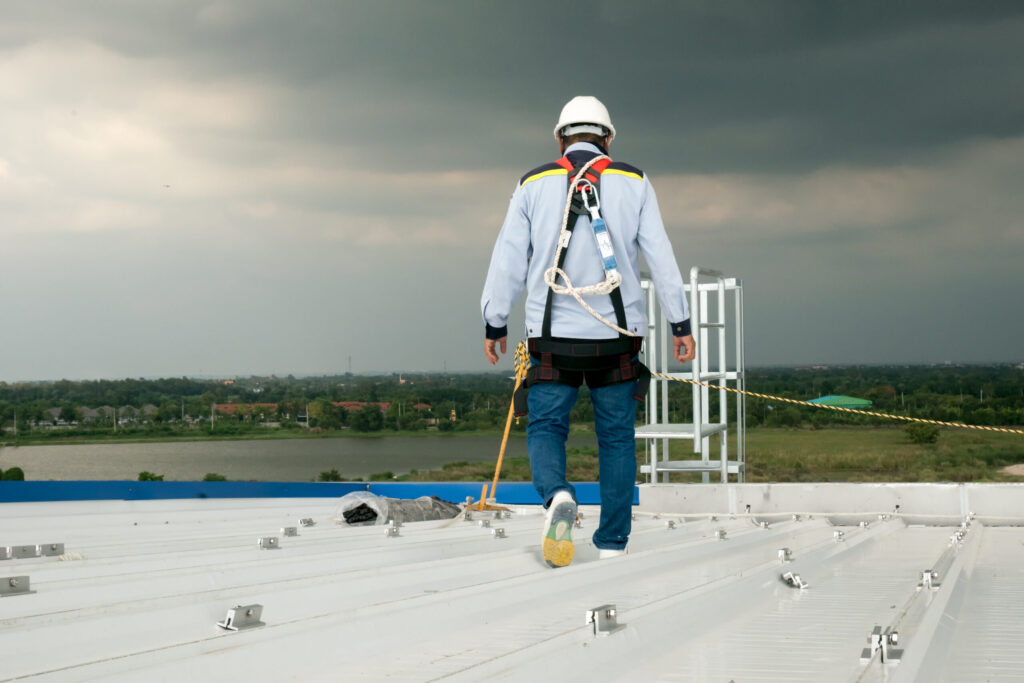Commercial roof inspections, what you need to know! As an Orlando business owner or property manager, you know that the intense Florida sun, torrential downpours, and high winds of hurricane season can take a toll on your commercial property. Your roof is your first and most critical line of defense, but without proper attention, it can quickly become your biggest liability. A professional commercial roof inspections isn’t just a suggestion; it’s an essential strategy for protecting your investment, avoiding costly surprises, and ensuring the longevity of your building.
At Top Builder Roofer, we believe in a proactive approach to commercial roof inspections. This comprehensive guide will walk you through everything you need to know about commercial roof inspections, from why they matter to the signs that you need to call a professional.
Why Commercial Roof Inspections Are Non-Negotiable in Orlando
Your building’s roof is a complex system designed to withstand constant exposure to the elements. Over time, that constant barrage of UV radiation, thermal expansion and contraction, heavy rain, and storm debris can lead to normal wear and tear that compromises its integrity. Tiny cracks, minor punctures, or loose flashing may seem insignificant, but in a climate like Orlando’s, these small issues can quickly escalate. A small leak can lead to widespread water damage, mold growth, ruined insulation, and even structural failures if left unchecked.
Regular inspections are the best way to catch these problems in their infancy, saving you money in the long run. Beyond just preventing major damage, a well-maintained roof also contributes to your building’s energy efficiency. A compromised roof with poor insulation allows your conditioned air to escape, forcing your HVAC system to work harder and driving up your utility bills. By prioritizing routine inspections, you ensure your building is functioning at its peak, protecting your bottom line and providing a comfortable environment for your tenants, employees, or customers.

The Proven Benefits of Regular Commercial Roof Inspections for Orlando Property Managers
For property managers in the greater Orlando area, a proactive maintenance plan is the key to preserving the value of your assets. Routine commercial roof inspections provide several critical benefits:
Insurance and Compliance: Many commercial insurance policies require proof of regular maintenance to cover storm damage. Neglecting inspections could result in a denied claim if the damage is found to be a result of poor upkeep. Furthermore, routine inspections help ensure you are in compliance with local building codes and regulations.
Cost Savings: This is the most significant benefit. Addressing a minor crack or sealing a seam is far less expensive than dealing with the aftermath of a major leak—think replacing drywall, insulation, and office equipment. Inspections allow you to budget for small repairs and avoid the financial shock of an emergency roof replacement.
Prolonged Roof Lifespan: A well-maintained roof can easily last for years beyond its standard warranty. By addressing wear and tear promptly, you can keep your roof in optimal condition, delaying the need for a costly and disruptive replacement. This proactive approach protects your capital and ensures your roof performs for its maximum expected lifespan.
Peace of Mind and Safety Assurance: A leaking or compromised roof poses serious risks. Water leaks can create slip hazards, short out electrical systems, and foster the growth of harmful mold. Regular inspections help identify and resolve these risks, ensuring your building remains a safe and secure environment for everyone.
The 8-Step DIY Guide to a Commercial Roof Inspections
While a professional inspection is always recommended, knowing what to look for can help you stay proactive and identify potential issues early. Here’s a detailed guide to what a DIY inspection should cover.
- Check for Visible Damage: Start your inspection from the ground. Look for obvious signs of damage such as missing shingles, cracked tiles, dents in metal roofing, or dislodged panels. Pay special attention to areas that may have been hit by flying debris during a storm.
- Examine the Building’s Interior: The interior of your building can often be the first place a roof leak shows up. Walk through the top floor and inspect ceilings and walls for any signs of water stains, discoloration, peeling paint, or bubbling. A musty odor in a room is a strong sign of hidden moisture and potential mold growth.
- Clear Debris from the Roof: Debris such as leaves, branches, and trash can accumulate on flat roofs and in gutters, blocking drainage systems and allowing water to pool. Regularly clearing this debris is crucial for preventing standing water, which can accelerate the deterioration of your roofing material.
- Inspect Flashing and Seals: Flashing—the metal pieces used to seal the edges and joints of a roof—is a common point of failure. Check for any signs of rust, cracks, or gaps. Also, closely inspect the seals around rooftop units like HVAC systems, vents, skylights, and pipes. Damaged seals can be a direct path for water to enter your building.
- Assess the Drainage System: Proper drainage is key to a long-lasting commercial roof. Ensure that gutters and downspouts are free of blockages. Check for sagging gutters or disconnected downspouts and make sure water is being directed away from the building’s foundation.
- Look for Signs of Gradual Wear: Beyond obvious damage, look for signs of aging. On flat roofs, check for bubbling, blistering, or sagging of the membrane. For sloped roofs, look for shingles that are curling, cupping, or have lost their protective granules. These are signs that the roof is nearing the end of its life.
- Document Your Findings: Keep a detailed record of your inspection. Take photos of any issues you find and note the location and severity. This documentation will be invaluable for tracking the condition of your roof over time and for providing information to your professional roofer or insurance company.
- Know When to Call a Pro: While a DIY inspection can identify surface-level problems, a professional roofer can provide a much more in-depth evaluation. They have the tools, experience, and knowledge to spot hidden issues, such as structural damage or compromised insulation, that you might miss.
Signs It’s Time to Schedule a Professional Inspection
- You notice water stains on your ceiling or walls.
- Your energy bills are inexplicably rising.
- Your roof appears to be sagging in certain areas.
- You’ve recently experienced a major storm with high winds or hail.
- Your roof is approaching its typical lifespan (15-20 years).
Don’t wait until a small issue becomes a full-blown emergency. Proactive maintenance followed up by commercial roof inspections are the key to protecting your assets and your peace of mind.
Call us for a free, no-obligation commercial roof inspections. We are here to help you through every step of the process!




